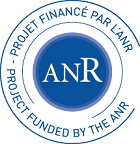



The aim of the “Design of Well Being Monitoring Systems (Do Well B.)” project is to build a Personal Health System (PHS) for early detection of challenging behavior, such as stress, of people diagnosed with Autism Spectrum Disorder (ASD), outside the hospital. This will use and improve stochastic modelling and statistics of physiological and environmental signals, and their relationship. Outside the hospital, in real life situations, we cannot use heavy devices such as MRI or biopsy. But today's technology allows the monitoring of physiological signals with embedded devices (heart rate, skin conductance, blood pressure ...). Thus our challenge is to determine the impact of psychological regulations by analyzing the variations of these physiological signals. In real life situations, a feedback occurs between audio-visual stimulations by the environment and the physiological response. Both signals are random time signals and should be studied by stochastic modelling and ad hoc statistics tools. The “Do Well B.” project is about building a rainbow, linking:
“Do Well B.” is a multidisciplinary project. It involves four teams:
This is a project with strong interactions between the four teams: indeed, the state to the art in each of the four fields is not sufficient to reach our target, which is a PHS for early detection of autistic challenging behavior. Thus, the interaction creates the need for improvement in the four fields: The “roadmap” of ADS scientists addresses the work on small samples to take into account the small delay of response and the reactivity of people with ASD syndrome. In probabilistic words, working on small samples rather than large ones implies to switch from asymptotic analysis and Central Limit Theorem to concentration inequalities, model selection and change point analysis. Another challenge, which requires modelling the auditory memory and attention in children, is the analysis of the feedback between environmental stimuli and the physiologic response. Eventually, taking into account the recent progress in physiological and environmental signal processing will lead ASD specialists to build new experimental protocols.